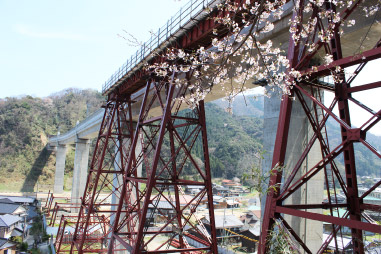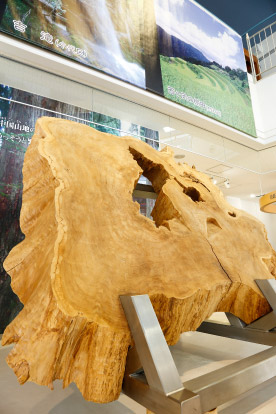
Though no longer in use, the Amarube Viaduct was the product of the steep mountain formations in the area. Steel girders from the bridge are on display.
This is accompanied by an Ojiro cedar that is 1,000 years old and spans to the ceiling.
This is accompanied by an Ojiro cedar that is 1,000 years old and spans to the ceiling.
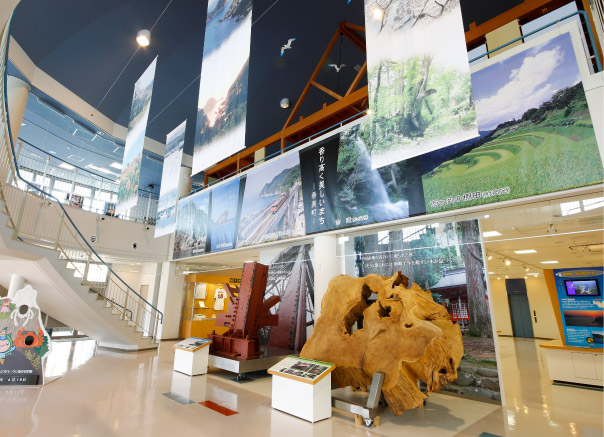

The Amarube Viaduct, the result of the unique topography of Tajima
The coastline along the north of Hyogo Prefecture is located close to mountains and valleys that form a unique rias coastline.
The area between Takeno Station (Toyooka-shi) and Igumi Station (Shin’onsen-cho) has a richly undulating terrain which required the installation of bridges in the valleys and tunnels cut through the mountains.
Originally, the area lacked the technology to dig long tunnels, so they were forced to dig tunnels higher up the mountain, which in turn led to bridges higher up. The valleys in Amarube were particularly wide, requiring even taller bridges.
The area between Takeno Station (Toyooka-shi) and Igumi Station (Shin’onsen-cho) has a richly undulating terrain which required the installation of bridges in the valleys and tunnels cut through the mountains.
Originally, the area lacked the technology to dig long tunnels, so they were forced to dig tunnels higher up the mountain, which in turn led to bridges higher up. The valleys in Amarube were particularly wide, requiring even taller bridges.
Construction began in December of 1909. Using steel imported from the United States, even with the limitations of the time, the top tier of technology was used. The Amarube Aqueduct was completed in January of 1912 and totaled 310m in length and 41m tall. It created a new route between Kasumi and Kutani (Shin’onsen-cho), allowing the San’in Main Line to fully open.
This trestle bridge was the finest in the Orient and linked Yoroi Station and Amarube Station through the JR San’in Main Line, its red brick fittings becoming a signature of the region.
This trestle bridge was the finest in the Orient and linked Yoroi Station and Amarube Station through the JR San’in Main Line, its red brick fittings becoming a signature of the region.
The Amarube Viaduct, a “station in the sky”
As the train exits the tunnel, a vast panorama of the ocean opens up. This stark contrast can be seen both from the train or from below the bridge, offering a unique vista that continues to enchant visitors.
However, strong winds produced by the unique topography of the region often led to train delays or closings. As a result, in 2010, after about 100 years in operation, a concrete bridge with windscreens was built in order to offer safer passage.
However, strong winds produced by the unique topography of the region often led to train delays or closings. As a result, in 2010, after about 100 years in operation, a concrete bridge with windscreens was built in order to offer safer passage.
People remain deeply attached to this bridge, and it remains a favorite of rail aficionados. Adjacent to the concrete bridge is a “station in the sky” that houses the former aqueduct and preserves three of its girders for the modern day. This area gives out onto lovely views of the nature around the Geopark.
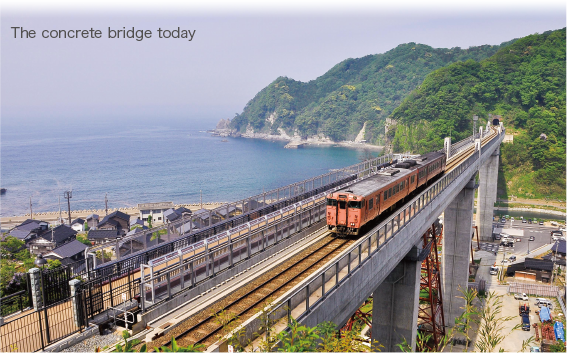

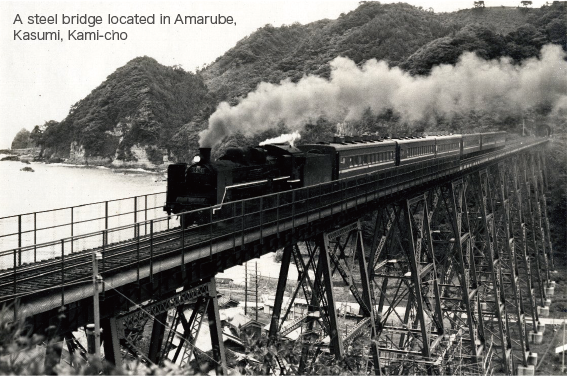

![]()
An Ojiro cedar that stood watch over the area for 1,000 years
The partitioned screens in the information area are made from stumps of Ojiro cedar felled in the area adjacent to the front shrine of Ojiro Shrine, located in Ojiro-ku, Kami-cho, which are held to be 450 years old.
Ojiro Shrine is a historic shrine that appears in the 927 Engishiki, a book of deity names and shrines. The grounds have several dozen Ojiro cedar trees, with the larger ones having special names that have been passed down over the generations, such as the Tomyo Cedar, the Couple Cedar, and the Harmony Cedar.
Ojiro cedar is one of the hallmark strains of cedar in Hyogo Prefecture, with the heartwood (the wood in the trunk) having a pale red through pale orange color. It is also resilient to snow and cold, making it excellent for afforestation and designated as a national seed tree.
Ojiro Shrine is a historic shrine that appears in the 927 Engishiki, a book of deity names and shrines. The grounds have several dozen Ojiro cedar trees, with the larger ones having special names that have been passed down over the generations, such as the Tomyo Cedar, the Couple Cedar, and the Harmony Cedar.
Ojiro cedar is one of the hallmark strains of cedar in Hyogo Prefecture, with the heartwood (the wood in the trunk) having a pale red through pale orange color. It is also resilient to snow and cold, making it excellent for afforestation and designated as a national seed tree.
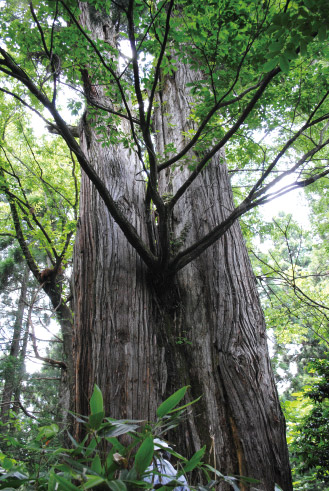
The legend of the Tomyo Cedar
In the early Edo period, Ueda Shin’emon of Osaka had a dream in which an old man appeared and told him to install a wayside shrine beneath an illuminated cedar tree.
This tree came to be called the Tomyo Cedar, referring to this illuminated aspect. Today, a thousand years old, it stands proud at the rear of the worship hall of Ojiro Shrine.
Tomyo Cedar
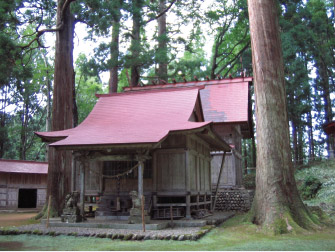
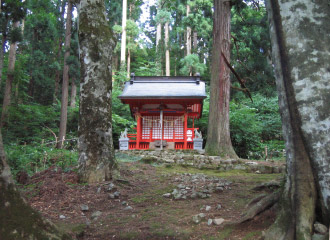
Ojiro Shrine (Akioka, Ojiro-ku) Inari Shrine (rear of Ojiro Shrine)
